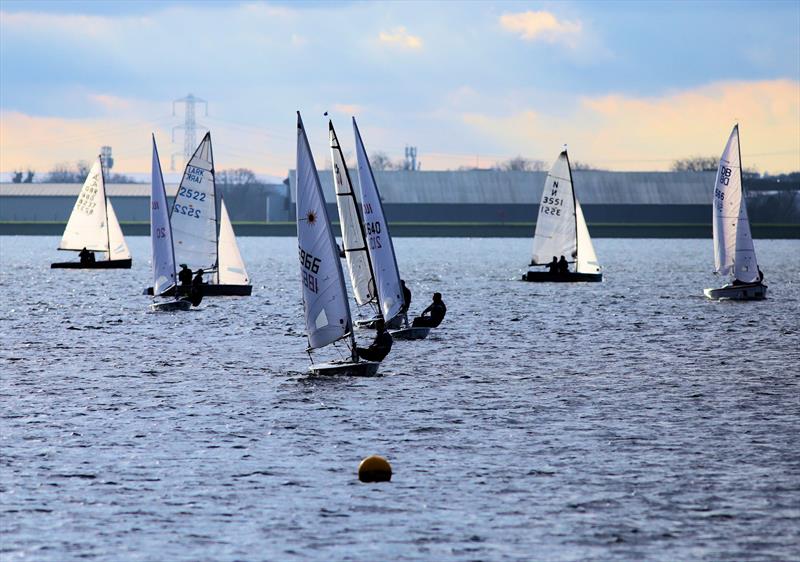
Dinghy racing tips: 4 ways to increase upwind speed
by GJW Direct 12 Jun 2024 23:00 NZST

Upwind sailing during the GJW Direct Bloody Mary 2024 © Mark Jardine
Dinghy racing is a competitive sport in which sailors share the passion of being out on the water and reaching for a goal, whether that be to win the race, improve their performance, or learn something new.
A key area to help in some races is knowing how to increase upwind speed, the process of sailing towards the wind. Upwind speed is all about effective steering, the correct body position, sail control and balance.
What is upwind speed?
A sailboat can't head straight into the wind, so when sailing upwind a zig zag route needs to be employed. Initially it can be a challenge, but with the right techniques you can use it to great advantage. How close you can point towards the wind depends on the shape and size of your dinghy.
Tips to increase upwind speed
Following a few simple tips and tricks will put you in a much better position to increase your upwind speed, continue reading to find out more...
Steering
When you plan on going windward, the aim is to point your boat as closely to the direction of the ever-changing wind as possible. This takes a lot of practice! It's not quite as simple as steering towards the shore or a buoy, so concentration is needed when sailing close-hauled.
Before you even set off, you should take into consideration your surroundings, feel the wind on your body, study the wind ripples on the water and watch the way the burgee flies to get a vague idea of which direction the wind is blowing. If you have one, the jib is a great point to focus on to ensure you're travelling in the right direction. A basic technique is noticing when the front of the jib begins to backwind, then you will be sailing as close to the wind as you can.
Many sails have tell-tails, which are short lengths of wool or another material near the luff. The aim is to get both the inside and outside tell-tail flowing horizontally towards the back. If the inside tell-tail is swirling then you need to bear further away from the wind, whereas if the outside tell-tail is swirling then you can head up closer to the wind. It's a constant balancing act!
Look at body position
Another area to concentrate on is body position. Often sitting further forwards in the boat will reduce drag by lifting the stern out of the water, reducing your wetted surface area. Just a small shift forwards upwind can make a big difference. If there are waves then you may have to then move back in the boat to avoid water coming over the bow of the boat.
Sail control
The depth of the sail helps to control the power, drag and acceleration of the boat. The more depth there is, the quicker the boat will go, however it won't point as high, but when a sail is flatter, there will be less drag, less power but better pointing ability. By keeping the sails rimmed correctly, it will help to generate lift and generate speed when steering towards the wind's direction.
A mainsail is controlled by a combination of the outhaul, cunningham and kicking strap, also known as a vang, which in combination give you a lot of control over the sail shape. For a jib you can adjust the sheet tension, sheet angle, and halyard tension to adjust the shape.
Balance
Balance and power combined make the perfect recipe for increasing upwind speed. When these components harmoniously work together it helps to reduce drag and maintain depth. All vessels are slightly different so the power and balance they need may differ to another, reiterating what was mentioned earlier is practice makes perfect.
Moving your bodyweight in and out to keep your boat as flat as possible will generally achieve the best results upwind.
When it comes to increasing upwind speed, the whole boat crew needs to play their part in feeling how well the boat is going and the direction of the wind.
Upwind speed can be a difficult obstacle to tackle, however, by perfecting techniques and fully getting to know your boat you will be able to increase your speed in no time. You'll soon know when your boat is 'in the grove' and there's not a better feeling in the world!
About GJW Direct
Having specialised in Marine Insurance for over 195 years GJW Direct can provide you with comprehensive cover for your Dinghy with instant quotes available online. Getting the right level of cover for your Dinghy is essential to having a good time out on the water, whether you’re looking for racing dinghy insurance or cruising.
Find out more and get a quote at www.gjwdirect.com/boats/dinghy